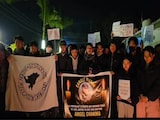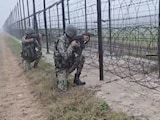The US has lost at least three nuclear bombs that have never been located. According to the BBC, one of these undetonated thermonuclear, or hydrogen, bombs lies at the bottom of the Philippine Sea. According to reports, it is believed to be 70 times more powerful than the one dropped on Hiroshima during the Second World War. These three bombs were lost within a period of 10 years - from 1958 to 1968 - but were never found, the outlet further said.
Since 1950, there have been more than two dozen "Broken Arrow" incidents involving accidental launch, theft or detonation or loss of US nuclear weapons. But only three have been documented.
The first bomb went missing in February 1958 near the Tybee Island, Georgia. The BBC said it was jettisoned to reduce the plane's weight for a safer landing. Then, on December 5, 1965, a bomber plane, pilot and nuclear weapon slipped off the side of a carrier boat in the Philippine Sea, never to be seen again.
The last documented "Broken Arrow" incident took place on May 22, 1968, when a nuclear attack submarine the USS Scorpion sank in the middle of the Atlantic, with the loss of 99 lives - and two nuclear-tipped torpedoes. The submarine and the weapons have never been recovered.
Despite extensive search efforts by American teams, the whereabouts of the missing bombs remained unknown, fuelling fears of a potential environmental catastrophe and geopolitical fallout. Speculation ran rampant, with theories ranging from espionage and sabotage to a cover-up by government officials.
However, the risk of them causing a nuclear explosion is thought to be low, as per the BBC report.
The story of the three missing American nuclear bombs evokes much intrigue and concern, and at the same time serves as a sobering reminder of the inherent risks and consequences of nuclear proliferation. It underscores the need for robust safeguards, rigorous oversight, and international cooperation to prevent the unthinkable from happening again.















